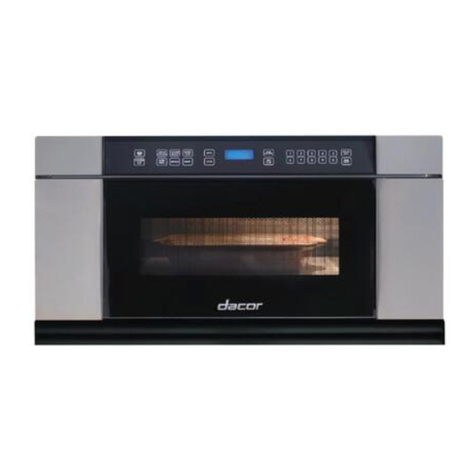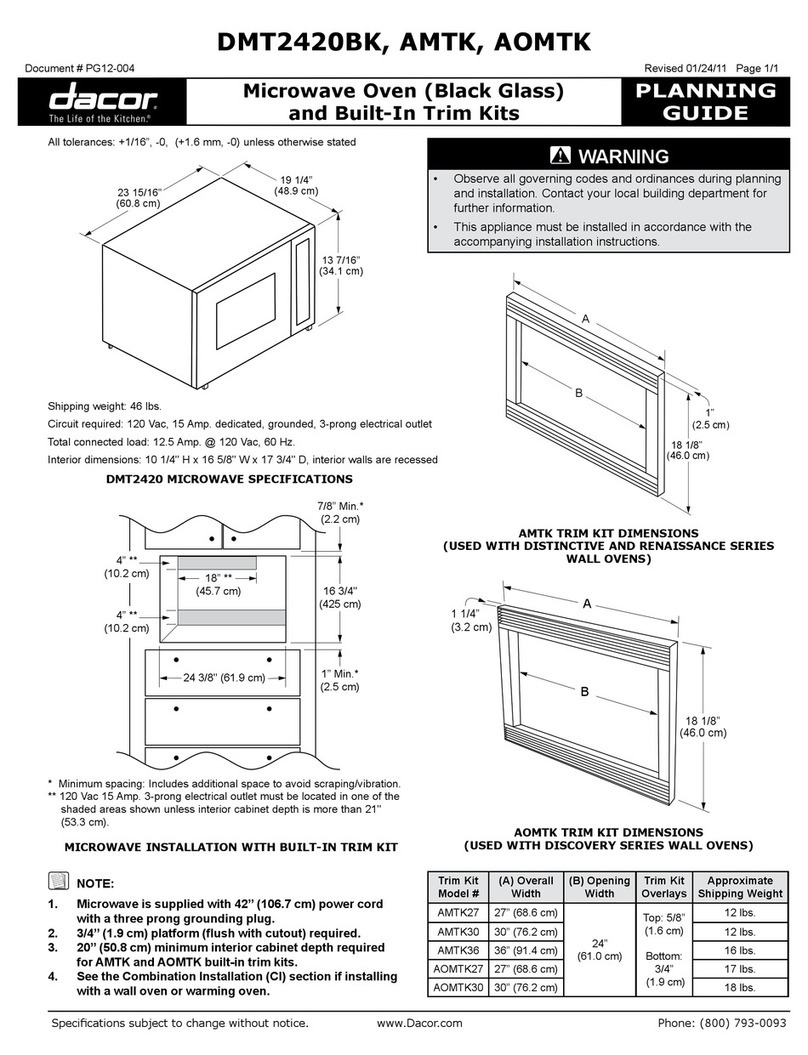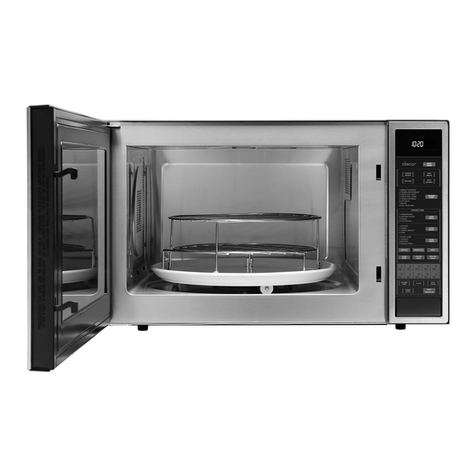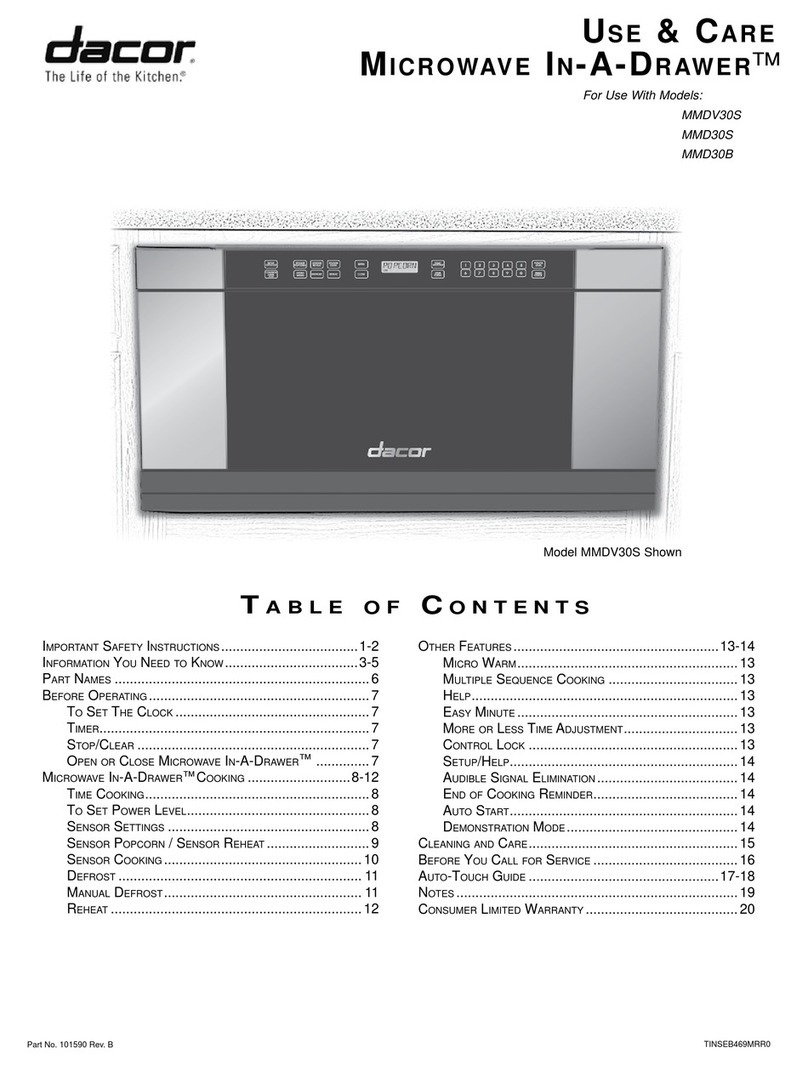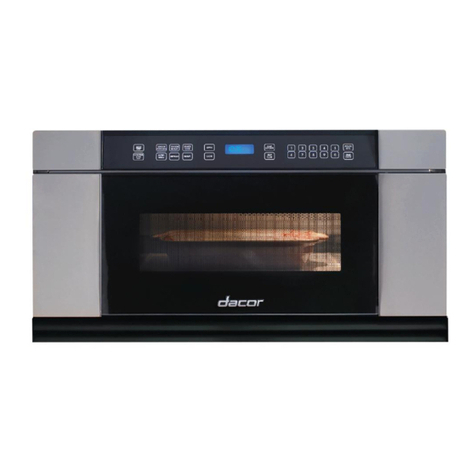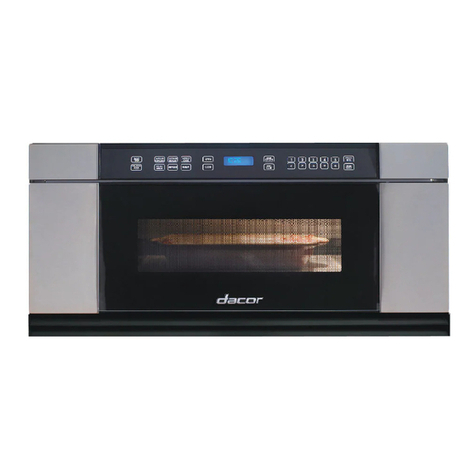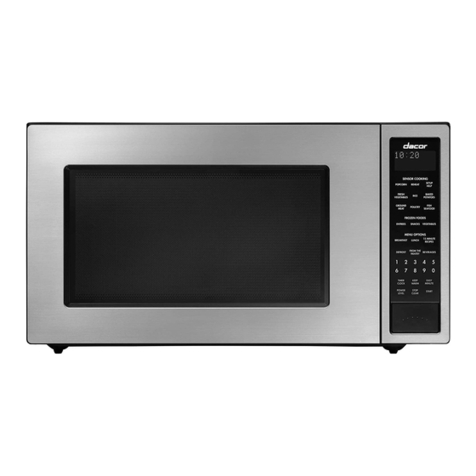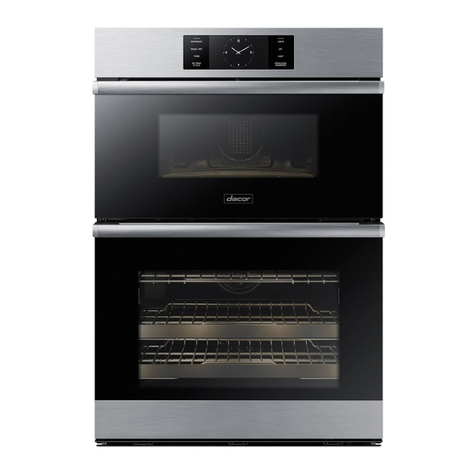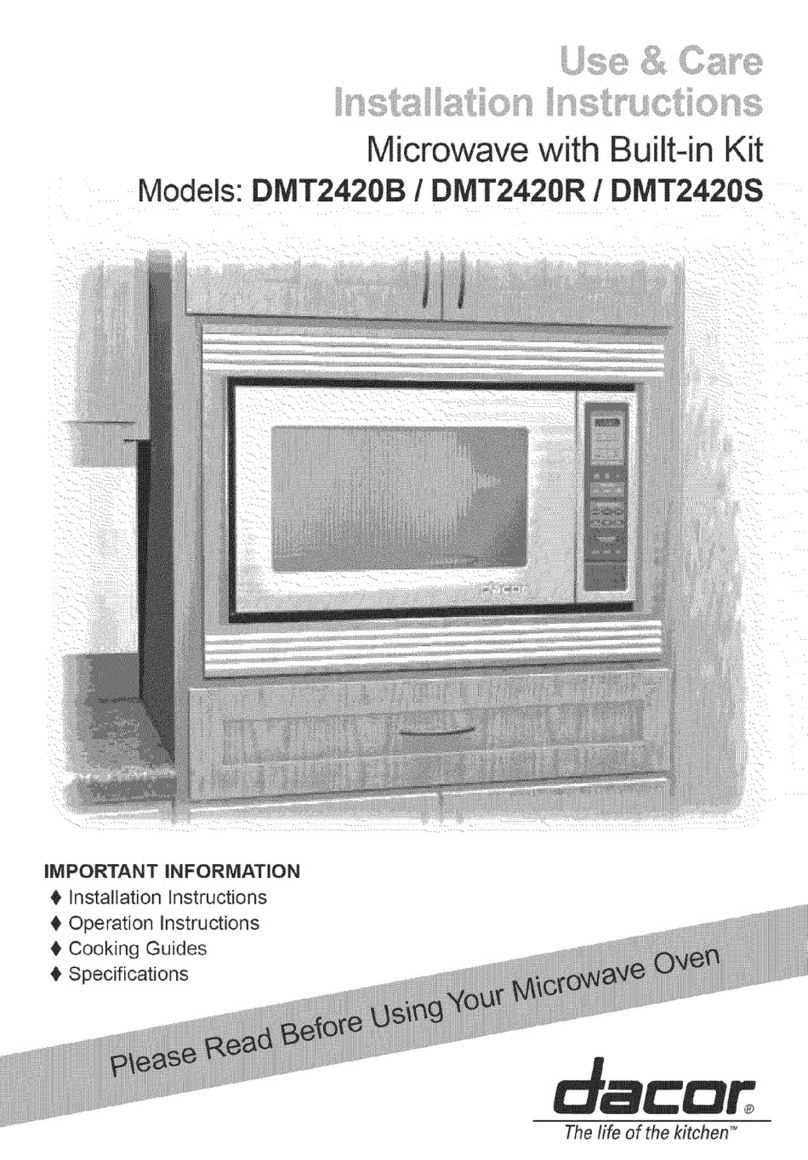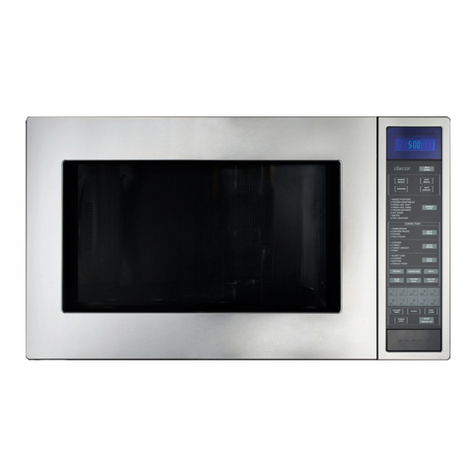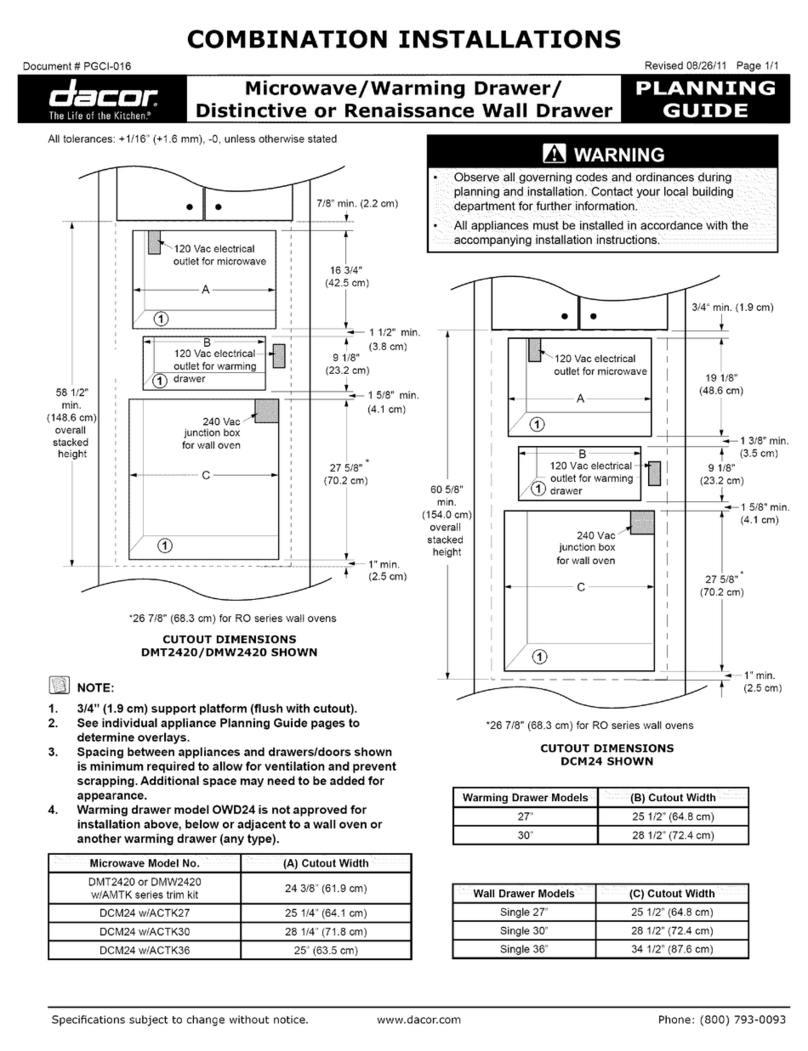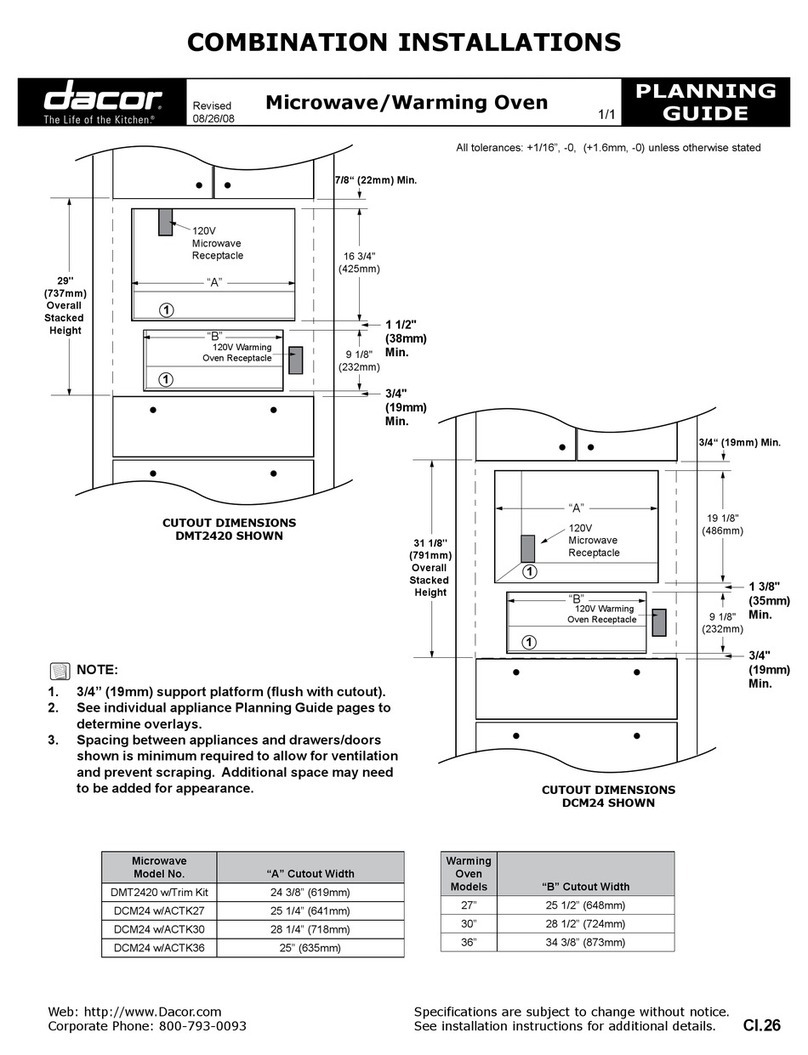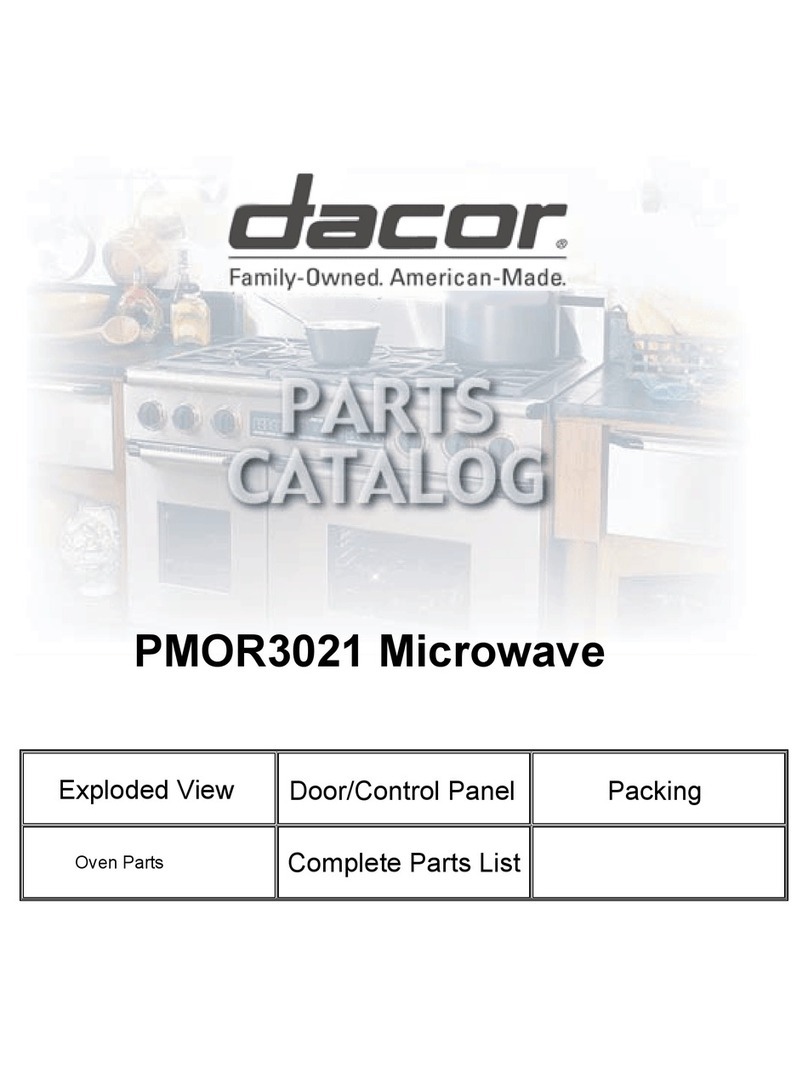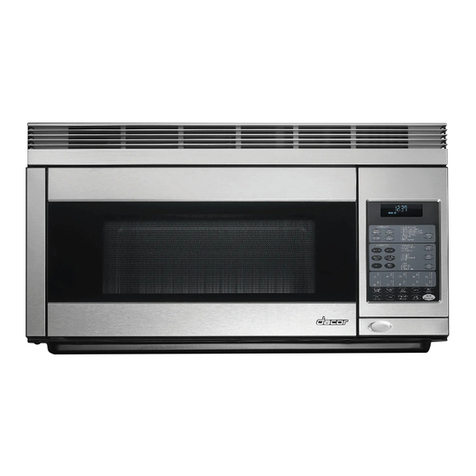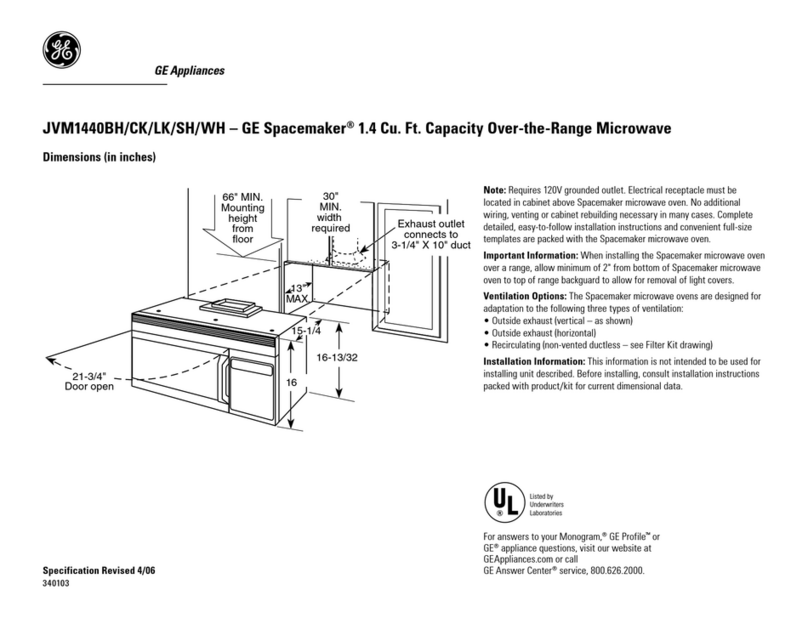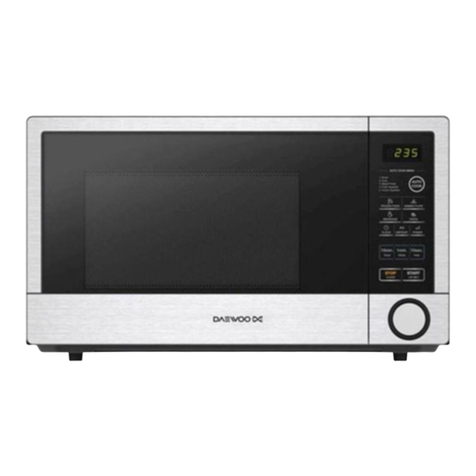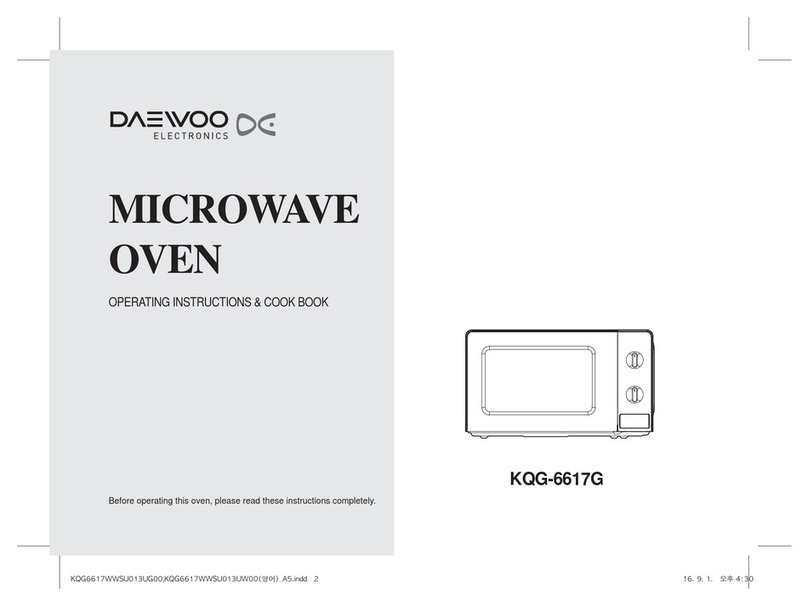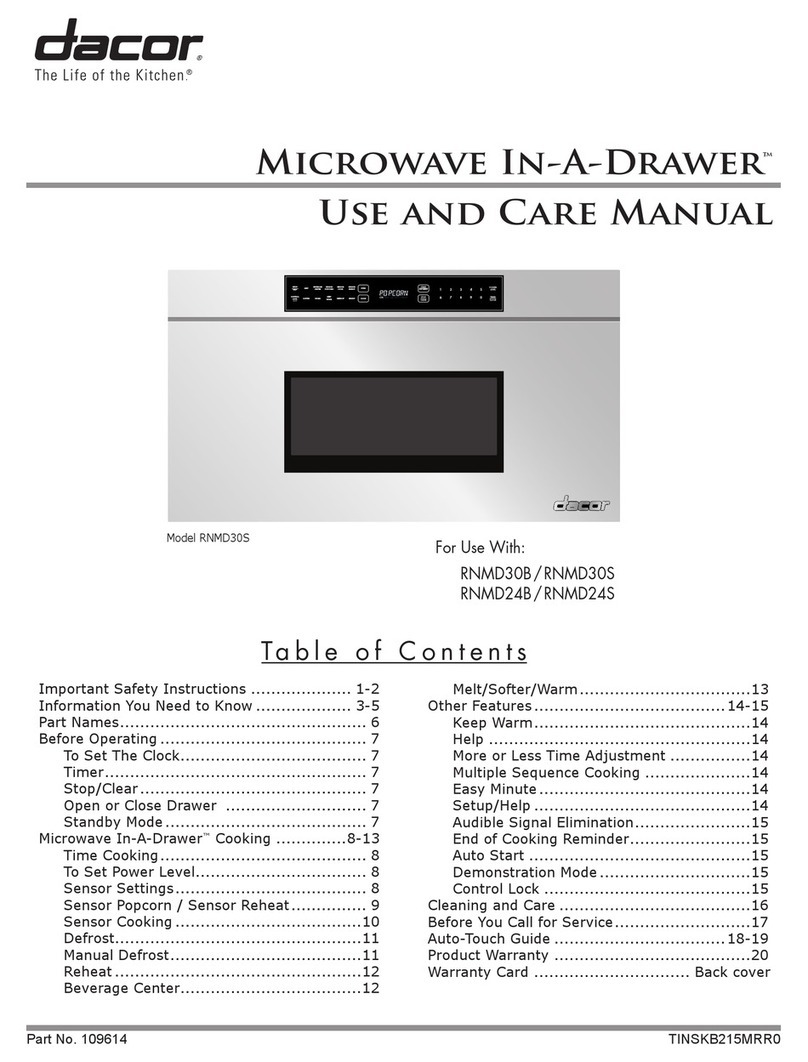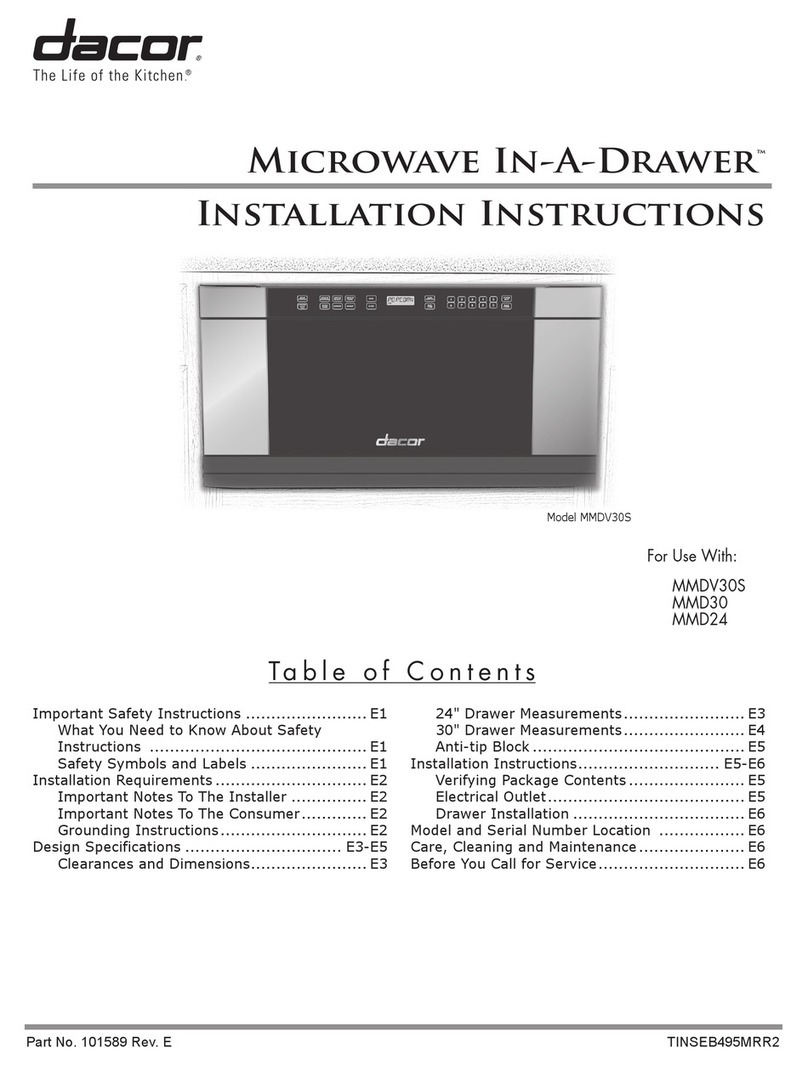6
DMO2420B
DMO2420R
DMO2420S
OPERATION
DESCRIPTION OF OPERATING SEQUENCE
Thefollowingisadescriptionofcomponentfunctionsduring
ovenoperation.
OFF CONDITION
Closing the door activates the door sensing switch and
secondary interlock switch. (In this condition, the monitor
switch contacts are opened.)
When oven is plugged in, 120 volts A.C. is supplied to the
control unit. (Figure O-1).
1. The display will show "Welcome".
Tosetanyprogramorsettheclock,youmustfirsttouch
theSTOP/CLEAR pad. The display will clear, and " : "
will appear.
COOKING CONDITION
Program desired cooking time by touching the NUMBER
pads. Program the power level by touching the POWER
LEVEL pad.
When the START pad is touched, the following operations
occur:
1. The contacts of relays are closed and components
connected to the relays are turned on as follows.
(For details, refer to Figure O-2)
RELAY CONNECTED COMPONENTS
RY-1 oven lamp/turntable motor/fan motor
RY-2 power transformer
2. 120 volts A.C. is supplied to the primary winding of the
power transformer and is converted to about 3.2 volts
A.C. output on the filament winding, and approximately
2360 volts A.C. on the high voltage winding.
3. Thefilamentwindingvoltageheatsthemagnetronfilament
andtheH.V.windingvoltage issenttoavoltagedoubler
circuit.
4. The microwave energy produced by the magnetron is
channelled through the waveguide into the cavity feed-
box, and then into the cavity where the food is placed to
be cooked.
5. Upon completion of the cooking time, the power
transformer, oven lamp, etc. are turned off, and the
generation of microwave energy is stopped. The oven
will revert to the OFF condition.
6. Whenthedoorisopenedduringacookcycle,themonitor
switch,doorsensing switch,secondaryinterlockswitch,
relay(RY1)andprimaryinterlockrelayareactivatedwith
the following results. The circuits to the turntable motor,
thecooling fan motor, and the high voltage components
are de-energized, the oven lamp remains on, and the
digital read-out displays the time still remaining in the
cook cycle when the door was opened.
7. Themonitorswitchelectricallymonitorstheoperationof
the secondary interlock switch and primary interlock
relayandismechanicallyassociatedwiththedoorsothat
it will function in the following sequence.
(1)When the door opens from the closed position, the
primary interlock relay (RY2) and secondary interlock
switch open their contacts. And contacts of the relay
(RY1)remainsclosed.Thenthemonitorswitchcontacts
close.
(2)When the door is closed from the open position, the
monitor switch contacts open first. Then the contacts of
the secondary interlock switch and door sensing switch
close. And contacts of the relay (RY1) open.
Ifthesecondaryinterlockswitchandprimaryinterlockrelay
(RY2)failwiththecontactsclosedwhenthedoorisopened,
the closing of the monitor switch contacts will form a short
circuitthroughthemonitorfuse,secondaryinterlockswitch,
relay (RY1) and primary interlock relay (RY2), causing the
monitor fuse to blow.
POWER LEVEL 0% TO 100% COOKING
When Variable Cooking Power is programmed, the 120
voltsA.C.issuppliedtothepowertransformerintermittently
throughthecontactsofrelay(RY-2)whichisoperatedbythe
controlunitwithina32secondtimebase.Microwavepower
operation is as follows:
VARI-MODE ON TIME OFF TIME
100% power 32 sec. 0 sec.
approx. 90% power 30 sec. 2 sec.
approx. 80% power 26 sec. 6 sec.
approx. 70% power 24 sec. 8 sec.
approx. 60% power 22 sec. 10 sec.
approx. 50% power 18 sec. 14 sec.
approx. 40% power 16 sec. 16 sec.
approx. 30% power 12 sec. 20 sec.
approx. 20% power 8 sec. 24 sec.
approx. 10% power 6 sec. 26 sec.
0% power 0 sec. 32 sec.
Note: TheON/OFFtimeratiodoesnotcorrespondwiththe
percentageofmicrowavepower,becauseapprox.2
seconds are needed for heating of the magnetron
filament.
SENSOR COOKING CONDITION
Using the SENSOR function, the food is cooked without
figuringtime,powerlevelorquantity.Whentheovensenses
enough steam from the food, it relays the information to its
microprocessor which will calculate the remaining cooking
timeandpowerlevelneededforbestresults.Whenthefood
is cooked, water vapor is developed. The sensor “senses”
the vapor and its resistance increases gradually. When the
resistance reaches the value set according to the menu,
supplementary cooking is started.
